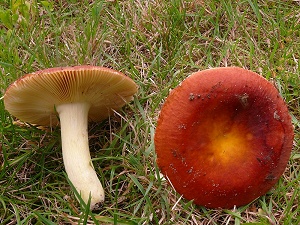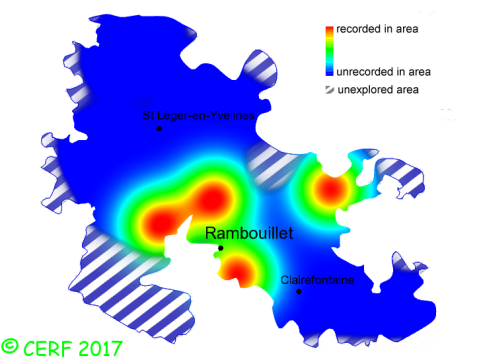| Russula aurea Pers. |
|
|
|
|
|
|
The cap is bright red to orange red; its margin is striate when mature. The cap surface is smooth, viscid in wet weather. The stem is white washed with yellow, without ring. The flesh is unchanging; its taste is mild; the odour is not distinctive; its texture is grainy (breaking like a chalk stick). The gills are ochre yellow, free to adnate, crowded . The spore print is yellow to ochre (H). This species is mycorrhizal. It grows on the ground, in broad-leaved and coniferous woods, on a rather calcareous soil, with oak, spruce, white and red fir. The fruiting period takes place from April to November.
Chemical tests : flesh becoming dirty pink when in contact with iron sulphate; negative reaction to sulpho-vanillin; positive and fast reaction to Ga´ac (bright blue);. Distinctive features : slimy cap surface in wet weather; ochre-yellow gills when mature; lemon-yellow edge of gills; lemon-yellow flesh just underneath the cap surface, white elsewhere; early in the season, as soon as in spring Russula aurea is quite rare and localised in the forest of Rambouillet, and is infrequent, more generally speaking . | ||
|
page updated on 14/01/18

